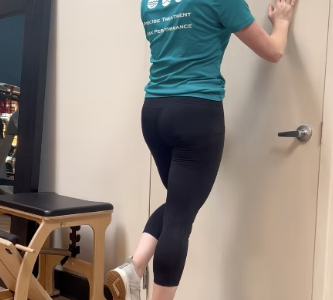Injuries are unfortunately a common part of the running and triathlon world, with up to 92% of runners experiencing an injury at some point. The causes of these injuries are varied and depend on factors like training history, work, diet, sleep, and much more. While we’ve discussed topics like overtraining, bike fit, and running gait in previous posts, some of the most powerful tools for improving performance and reducing injury risk are often overlooked: strength training, yoga, and mindfulness meditation. Sometimes, adding these components to your training routine, instead of just piling on more miles or hours, can be the key to achieving better results and staying injury-free.
Strength Training
Strength training is a game-changer when it comes to improving performance and reducing injury risk. As Zach Bettis highlighted in a previous blog, strength training can improve running economy, power, and aerobic capacity. This means your heart works more efficiently, you can run faster with fewer steps, and you can cover the same distance with less effort. You don’t need to spend hours in the gym; just two 30-45 minute strength training sessions per week are enough to reap these benefits.
From an injury perspective, strength training helps correct muscle imbalances and functional movement deficits that contribute to common running injuries. Issues like knee valgus, femoral adduction, and over-pronation are often linked to these imbalances, and strength training can address them, improving your form and reducing the risk of injury.
Yoga
Yoga is an excellent addition to any endurance athlete’s training program because it promotes strength, flexibility, and a strong mind-body connection. The practice integrates breathing with movement, stimulating both the sympathetic and parasympathetic nervous systems.
In endurance sports, we tend to over-rely on the sympathetic nervous system, which controls the fight-or-flight response, raising heart rate, respiration, and blood pressure. However, tapping into the parasympathetic nervous system can help lower heart rate, relax muscles, and prepare the body for rest. Since many endurance athletes operate in a constant state of high-stress activity, yoga helps to counterbalance that stress, improving recovery and reducing the risk of injury.
Taking a yoga class once a week—especially one focused on runners or athletes—can significantly enhance your training. You may even want to try our Yoga for Runners class, which starts in June!
Mindfulness Meditation
Spending just 3-5 minutes in quiet reflection each day can do wonders for reducing stress, improving performance, and lowering injury risk. Several studies show that mindfulness meditation can boost motivation, focus, and overall satisfaction in athletes. It also helps reduce stress and the risk of burnout, and it plays a role in improving recovery times.
In one study, athletes who practiced mindfulness meditation were found to be less likely to get injured, as self-regulating thoughts and emotions contributes to better physical resilience. By training your mind to stay calm and focused, you can avoid the mental and physical strain that leads to injuries.
Making It Work for You
We all have reasons to skip out on strength training, yoga, or meditation—busy schedules, lack of time, or simply not seeing the immediate benefits. However, by replacing just one or two hours of your weekly training routine with these practices, you can significantly boost your resilience to injury. Whether you choose yoga, strength training, or meditation—or a combination of all three—you’ll be improving both your physical and mental strength.
Changing habits is always a challenge, but isn’t it more rewarding to keep training and racing than to watch from the sidelines due to injury? Stay consistent, and your body will thank you.





